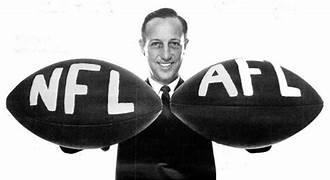The 1966 merger between the National Football League (NFL) and the American Football League (AFL) was a landmark event in American sports history. This merger not only brought together two rival leagues but also laid the foundation for the modern-day NFL as we know it. In the 1960s, the NFL and AFL were competing against each other for players, fans, and television contracts. The AFL, founded in 1960, sought to challenge the established NFL by offering a more exciting and high-scoring brand of football. The competition between the two leagues was fierce, leading to bidding wars for players and a split in the fan base. Recognizing the detrimental effects of the rivalry, the NFL and AFL decided to explore the possibility of a merger in 1966. After months of negotiations, the two leagues agreed to join forces, with the merger officially taking effect on June 8, 1966. The newly formed league retained the name "National Football League" and expanded to include all ten AFL teams, creating a 26-team league. One of the key motivations behind the merger was the desire for a unified and stronger professional football league. By combining their resources, the NFL and AFL aimed to create a more stable and financially viable organization. The merger allowed for the pooling of television rights, resulting in a more lucrative broadcasting deal and increased exposure for the sport. The merger also brought about structural changes within the NFL. The league was divided into two conferences, the National Football Conference (NFC) and the American Football Conference (AFC), with each conference comprising teams from both the NFL and AFL. The winners of each conference would then face off in the Super Bowl, a championship game that would determine the undisputed champion of professional football. The merger had a profound impact on the sport itself. The AFL introduced several innovations that were adopted by the unified NFL, such as the two-point conversion, player names on the back of jerseys, and the use of an official game clock. These changes helped to modernize the sport and enhance the fan experience. The merger also led to the expansion of the league, with new teams being added in subsequent years. This growth not only brought football to new markets but also increased the popularity and profitability of the sport. The NFL's reach expanded, making it the dominant professional football league in the United States. The success of the NFL-AFL merger paved the way for future mergers and expansions in professional sports. It set a precedent for leagues to put aside their differences and work together for the greater good of the sport. Today, mergers and expansions are common occurrences in various sports leagues worldwide.
1966 U.S.A. – – NFL / AFL Merger
